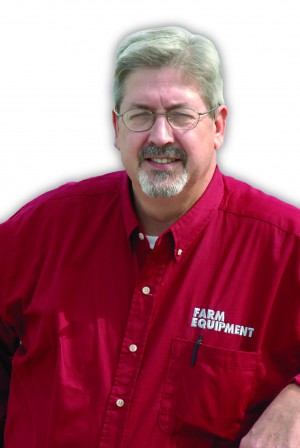On paper, the two 2013 Dealerships of the Year covered in this issue of Farm Equipment couldn’t be farther apart. One — Stotz Equipment — has 23 locations in 8 states, 380 employees and revenues last year of $235 million. The other — Lake County International — has 1 location covering a small region in South Dakota, with 22 employees and annual revenues of just over $25 million. (For the record, until 1997, Stotz was a 3-store dealership.)

Despite their differences, both of these dealers are clearly on the same page when it comes to what they focus on and what they ultimately achieve. And both are clearly far above average.
In 2012, Stotz Equipment had a return on assets of 15.2%; Lake County 24%. This compares to an industrywide average of 8.6%, according to the SouthWestern Assn.’s 2011 Cost of Doing Business Study. When it comes to parts and service absorption, Lake County achieved a 97.3% level last year, while Stotz came in at 82.7%. The industry average was 68%.
Because of their differences in scale, of course, there are disparities when it comes to logistics of the two operations. For example, when it comes to communicating with employees, Tom Rosztoczy, president/CEO of Stotz Equipment, travels 1,500 miles twice a year to personally deliver a “State-of-the-Dealer” talk at each of his 23 stores. These are planned affairs complete with PowerPoint slides.
At Lake County, when co-owners Jeff and Tom Bloom need to speak to their crew, they huddle up in the shop. Before heading out on sales calls, Jeff tells his folks, “Listen guys, I’m going out there to make a lot of big commitments and promise my butt off. I need you to cover me.” No slides. No podium.
Different? Yes, but with the same effective result — employees know what is going on and where the business is heading.
Over the years, some smaller dealers told me they have a hard time relating to our stories on big multi-store dealerships. But think about it. While there are clear differences between the size and scope of Stotz Equipment and Lake County, upon reading their stories, you’ll see they’re both aiming for the same thing. That is to take care of their finances, their employees and their customers. In other words, they stick to the tried and true business principles that every successful dealership must keep front of mind day in and day out.
Looking back over our 19 Dealerships of the Year since 2005, each discussed the hard lessons they learned along the way and how they applied these lessons to improve their operations. What dealer, regardless of size, can’t relate to another’s experiences, good or bad?
That’s what it’s all about. In 2006, we asked Peter Christianson, president of Titan Machinery (they “only” had 29 dealerships back then) what they were doing differently as a big dealer than they did when they were a smaller operation. He said it then and it still applies today, “We’re simply doing ‘more’ of what good dealerships have been doing for 70 years.”
In other words, we are yet to find a dealership, even the best of the best, that has a magic formula for succeeding in this business. It’s still like winning at baseball: “Ya throw the ball. Ya hit the ball. Ya catch the ball.”
As our 2013 Dealerships of the Year will tell you: keep it simple, focus on the basics, care about what you’re doing and who you’re doing it for. The rest will come.
Dave Kanicki, Executive Editor
dkanicki@lesspub.com







